Encompassing 77,115.68 square miles, South Dakota is the 16th largest state in the U.S. Some people call it Mount Rushmore State. But others call it “the land of infinite variety,” owing to the impressive diversity of its many ethnic groups and breathtaking scenery showcase.
Did you also know the native American Pasque is South Dakota’s official floral emblem? It grows throughout the state, whose estimated population was 909,000 as of 2022. Most people are in industries like mining and power, manufacturing, and agriculture, explaining why land is one of the most valuable assets here.
Unlike states such as Nevada, Utah, Idaho, and Alaska, private investors own 80% of the land in Mount Rushmore State. While some attained it through opportunistic buyouts, others got their properties by planning strategic acquisitions. But who exactly are the biggest landowners in South Dakota? Let’s find out!
1. Federal Government – 2,646,241 Acres
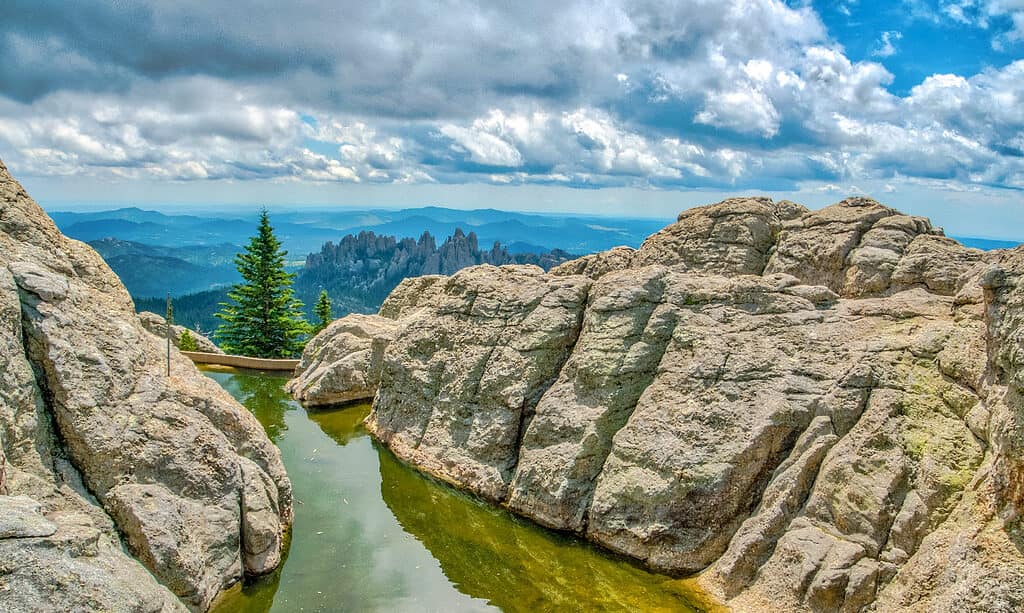
Unlike states such as Nevada, Utah, Idaho, and Alaska, private investors own 80% of the land in Mount Rushmore State.
©Exploring and Living/Shutterstock.com
The federal government owns 2.6 million acres in South Dakota, only 5.4% of the 48.9 million acres in the state. The United States Forest Service (USFS) oversees 2,017,435 acres of that land, mainly comprising grasslands and natural forests welcoming hunters. These include:
Black Hills National Forest
The Black Hills is in western South Dakota and boasts 1.2 million acres of dense forests and hills. It offers plenty of excellent locations for fun activities such as hiking, camping, horseback riding, biking, and rock climbing. Wildlife viewers will spot species like deer, elk, coyote, pronghorn, and wild turkeys. Although most of the animals in this forest are harmless, it’s always wise to be cautious around them.
Grand River National Grassland
With 154,783 acres, this grassland is in northwestern South Dakota. Anyone can come here to hunt at their convenience. It’s also popular among fishing enthusiasts, who often catch species like catfish, panfish, walleye, and pike.
Custer National Forest
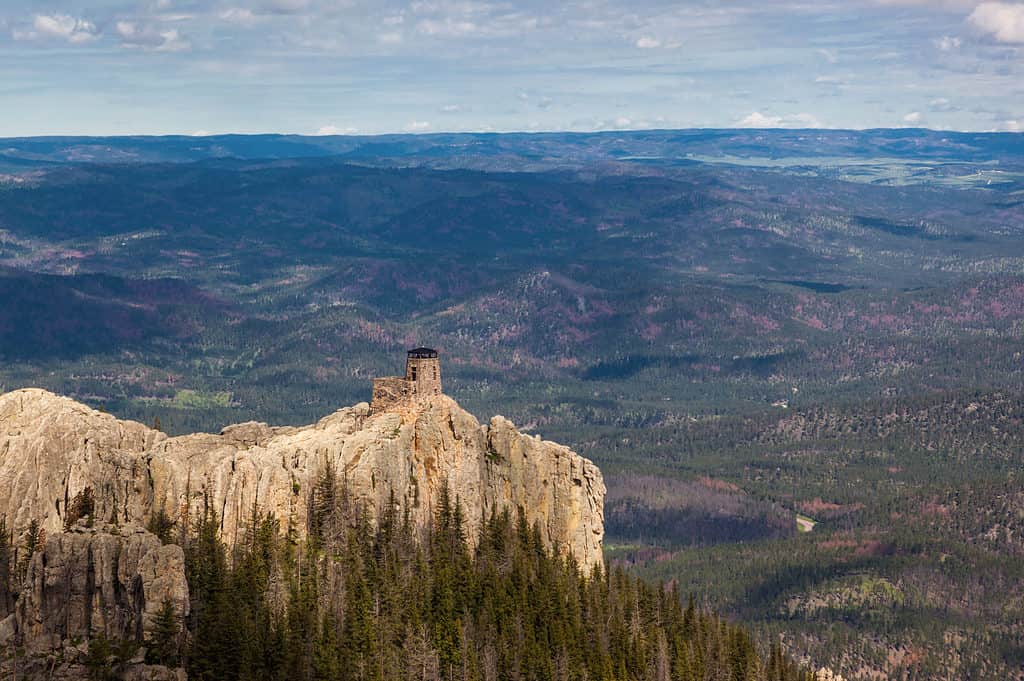
Recognized as the second largest national grassland in the U.S., the
Buffalo
Gap National grassland covers 595,715 acres in southwestern South Dakota.
©Tami Freed/Shutterstock.com
Only a section of Custer National Forest is in northwestern South Dakota; a significant portion of its 1,188,130 acres belongs to Montana. Nevertheless, it’s home to the rare merlin (Falco columbarius) and a vast pool of other wild animals, including cougars and grizzly bears.
Buffalo Gap National Grassland
Recognized as the second largest national grassland in the U.S., the Buffalo Gap National grassland covers 595,715 acres in southwestern South Dakota. One of its main allures is the visitor center, which has countless wildlife and plant exhibits. You’ll also find a gift shop and theatre with videos about the land.
Other state agencies managing land in South Dakota are:
- U.S. National Park Service – 141,312 acres
- U.S. Fish and Wildlife Service – 205,128 acres
- U.S. Bureau of Land Management – 274,437 acres
- U.S. Department of Defense – 7,929 acres
2. Landowners In South Dakota: Foreign Investors – 356,942 Acres
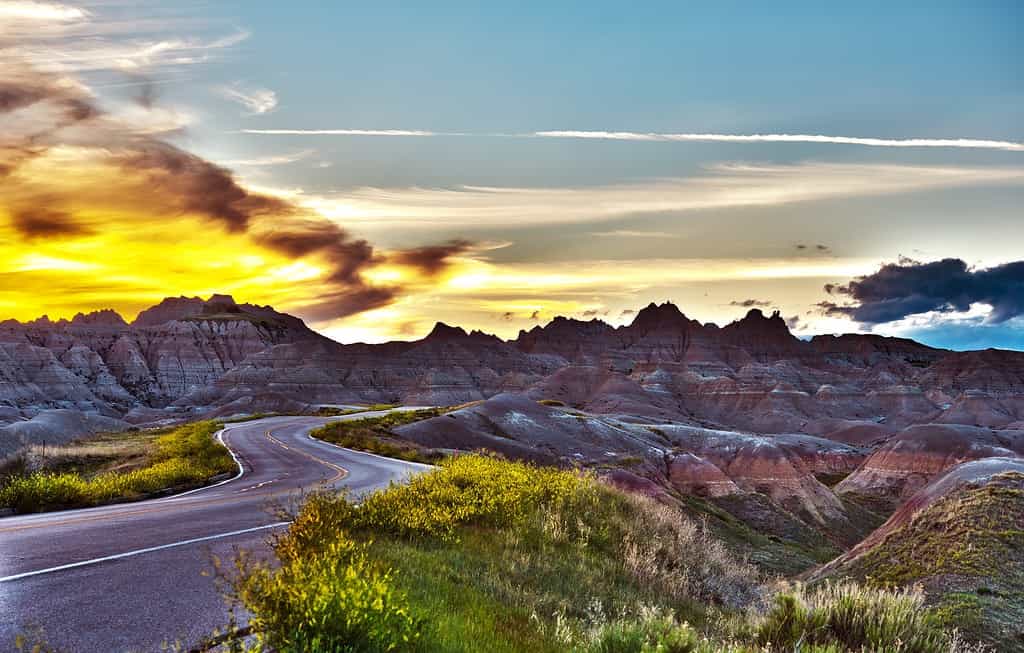
Most people in South Dakota work in the mining industry, which explains why land is one of the most valuable assets here.
©Virrage Images/Shutterstock.com
Statistics from the United States Department of Agriculture (USDA) show that foreign investors possess 356,942 acres of land in South Dakota. As of 2020, Canadians owned 123,850 acres, while Britons had 63,017 acres under their name. More foreigners possessing land in the state were:
- Italians – 2,116 acres
- The Dutch – 4,300 acres
- Germans – 27,551 acres
- Others – 136,108 acres
The total land owned by foreign investors in South Dakota is less than 1% of the state’s agricultural land. Unlike other states, the federal government hasn’t established a law limiting the number of acres a foreigner can own or prohibiting them from buying property. For instance, North Dakota, Iowa, Minnesota, and Hawaii don’t allow non-citizens to own pieces of land in their states.
This means more foreigners might continue investing in land in South Dakota. Most of them are drawn to the diverse development opportunities available since they can invest in commercial and real estate properties or farms. Others even dream of relocating to the state, thanks to its vibrant cultural scene and unmatched beauty. Besides, South Dakota has often been described as the “American tax haven” for the wealthy, explaining why they’re inclined to purchase properties in the state.
3. Ted Turner – 187,278 Acres
Years ago, being a jack of all trades was frowned upon and often equated to incompetence. But interestingly, being a “master of none” is how Ted Turner built his empire and became the third-largest private landowner in the United States, with a whopping 2,000,000 acres under his name.
Most people know Turner as the founder of the top-rated news network CNN, TNT, and TBS. He’s also a philanthropist whose acts have helped to preserve natural systems through the Turner Foundation, which he founded in 1990. In addition, the media mogul has partnered with many organizations to fight global issues such as climate change, malaria, poverty, and child mortality.
Turner started acquiring land almost four decades ago when he sank a boatload of money in his first farm in Toston, Montana. Today, he’s the biggest private landowner in multiple states, including New Mexico, Nebraska, and South Dakota. In the latter, he owns 187,278 acres, where two of his 17 ranches are distributed nationwide. These are:
Bad River Ranch
Bad River Ranch sits on a 141,357-acre tract at the heart of South Dakota. Its native grassland is breathtaking, but the wildlife species on the land are also worth mentioning. Some animals calling this large piece of land home are the bison. Turner has always wanted to preserve them, as he told CNN in 2019, explaining why he owns the nation’s largest private bison herd with over 50,000 head.
Other species you’ll encounter on the Bad River Ranch are:
- Skunks
- Prairie dogs
- Mountain lions
- Foxes
- Coyotes
- Owls
- Eagles
- Elk
- Bobcats
- Whitetail and mule deer
Bad River Ranch also hosts the endangered swift fox, the nocturnal hunter whose population has drastically declined due to habitat loss and fragmentation, vehicle collisions, and predation by other animals, including coyotes. In addition, the ranch supports a project to preserve the black-footed ferret, which is on the verge of extinction due to habitat destruction and disease.
Given the long list of animal species on the land, hunting is among the most popular activities on Turner’s Bad River Ranch. You must apply for a license and book your hunt to be eligible. Because the ranch is a hotspot for hunting enthusiasts, acquiring a permit might take up to three years. But thankfully, they provide accommodation for hunters, so you don’t have to worry about that when the opportunity to pursue wildlife presents itself.
Standing Butte Ranch
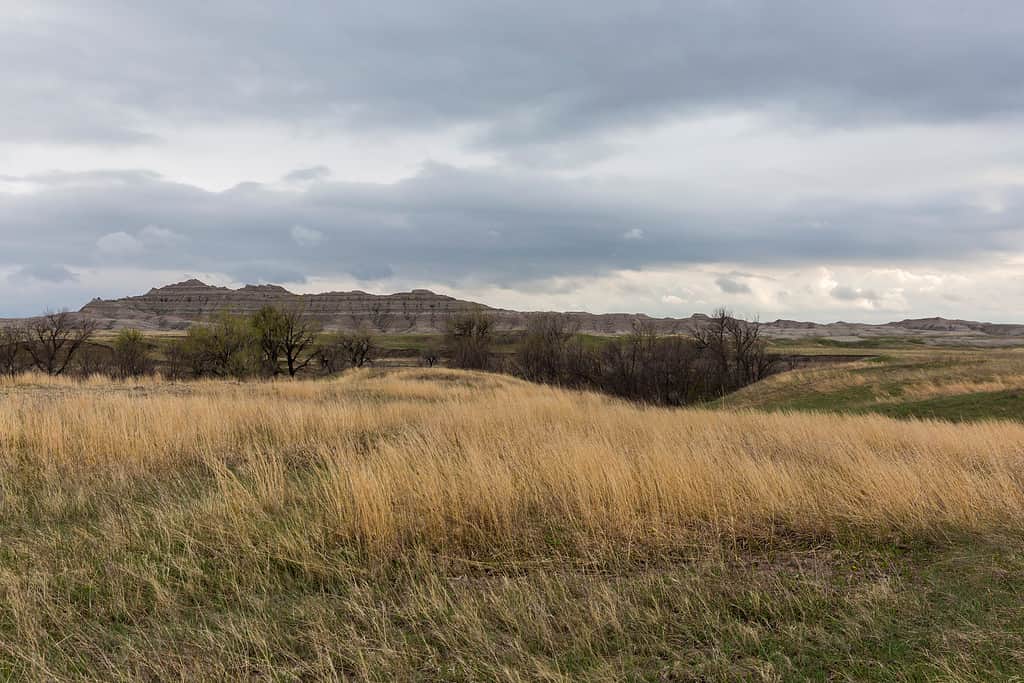
Encompassing 77,115.68 square miles, South Dakota is the 16th largest state in the U.S.
©BlueBarronPhoto/Shutterstock.com
If you’ve watched Kevin Costner’s western film Dances with Wolves, you might know a little about Standing Butte Ranch, previously known as Triple U Buffalo Ranch. The movie and Bill Kerby’s Lakota Woman: Siege at Wounded Knee were shot there, but that was way before Turner Enterprises acquired it in 2015.
With 45,921 acres of beautiful natural prairie, this ranch harbors many wild animals, including:
- Bison
- Pheasant
- Burrowing owls
- Raccoons
- Badgers
- Wolves
- Skunks
- Prairie chickens
- Ducks
- Geese
- Sharp-tailed grouse
Standing Butte Ranch also has 174 artificial ponds home to many types of fish, such as perch, sunfish, and pike.
4. Landowners In South Dakota: Land Trusts – 149,429 Acres
Land Trusts in South Dakota now protect 149,429 acres in the state, including family-run farms, ranches, and the natural habitats of different plant and animal species. This is a 45% increase since 2010, showing how much these non-profit organizations are committed to preserving nature and the people’s way of life.
Some of the land trusts in this state are the South Dakota Agricultural Trust Land (SDALT) and the Nature Conservancy, which has conserved 62,801 acres so far. The Rocky Mountain Elk Foundation and The Humane Society Wildlife Land Trust have protected 34,721, and 145 acres, respectively.
Another prominent land trust operating in South Dakota is the Northern Prairies Land Trust which has conserved 7,536 acres as of this writing. It boasts almost 1,000 passionate members dedicated to one goal—to save as much land as possible and restore it for wildlife habitats, cultural protection, water quality, and agricultural purposes.
The Northern Prairies Land Trust operates in many towns across the state, such as:
- Aurora
- Brown
- Brule
- Gregory
- McCook
- Hyde
- Jackson
- Todd
- Turner
- Union
Land trusts in South Dakota and other states also provide programs to help community members protect their land and understand how it benefits future generations.
Owning Land in South Dakota: What to Know
As mentioned above, a large portion of the land in South Dakota is privately owned, and you can also acquire a piece easily. But before buying your property, understand the following essential things to ensure it’s secure, livable, resellable, and worth it.
Zoning Restrictions Affect Land Use
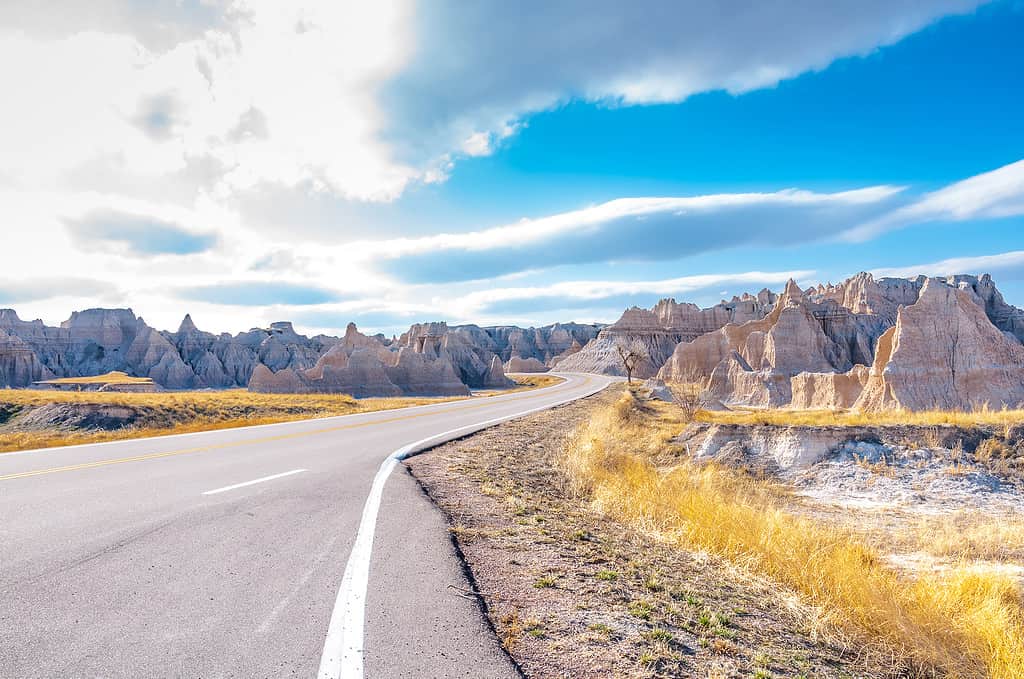
Before buying land in the region; familiarize yourself with the zoning regulations in South Dakota.
©NaughtyNut/Shutterstock.com
Familiarize yourself with the zoning regulations in South Dakota before buying land in the region. While some areas are zoned for industrial, residential, and commercial use, others are for agricultural purposes. Knowing these restrictions allows you to decide if the place you plan to invest in is ideal for the development ideas you have in mind.
The Location Matters
Besides zoning regulations, you must also consider the specific location of the land you intend to purchase. Remember, it’s not just about securing a few acres in South Dakota. You want a place where your investment will help you to attain your goals in the long run. For instance, if you plan to establish a business, your target market must live nearby so they can comfortably access your goods and services.
Supposing you want to resell the piece of land after a few years, choose a fast-growing community such as Rapid City. Between 2020 and 2021, it grew by 1.90%, a growth rate way higher than that of cities like Phoenix, Billings, and Sioux Falls. Undoubtedly, in the future, the value of an acre here will be worth more than it is today. And you could rake in a considerable profit reselling your property if it’s in the metro area.
It’s Best to be Near Amenities
More often than not, landowners overlook the amenities in the area they want to buy land, and they always regret it. No matter how beautiful, large, or affordable the property is, it’s of little use if situated miles away from health facilities, transportation, schools, and entertainment.
Utilities like electricity, internet connection, and water are necessary, even if you want to resell the property instead of developing it. Potential buyers will require these essential services and will likely back out as soon as they know they’re unavailable.
There Could be Hazards
Something else you should know before putting your hard-earned money into a piece of land in South Dakota is that some areas are prone to hazards like flooding, drought, storms, tornadoes, and wildfires. Beware of them before making your huge investment; if you decide to buy the land still, ensure you have the finances to protect your property.
For example, Sturgis is at risk of flooding, a natural disaster likely to negatively impact both locals and landowners in the city. Unless you’re ready to deal with the damage it might cause and recover, it’s best to avoid it when buying land.
You’ll Need a Lawyer
Although hiring a real estate attorney when buying land in South Dakota is not mandatory, it’s advisable, especially if you’re a foreigner. For starters, your lawyer can look into the history of the property you’re eyeing to help you make the right purchase decision. You want to avoid buying land with unsettled disputes as you might never own or develop it.
A real estate attorney can also explain the zoning challenges you will likely face if you buy land in a particular area. In addition, they’ll help you identify the property’s boundaries to prevent clashes with your neighbors in years to come.
Besides, much paperwork is involved in acquiring land in Mount Rushmore State. Your lawyer will handle them correctly since they understand the legal jargon and keep essential records for future use.
If you want to enjoy all these amazing perks of involving an attorney when purchasing land, ensure they’re qualified for the job. They should have met the educational requirements of practicing law, including being admitted to the South Dakota bar. A few years of experience in real estate and excellent communication, judgment, and analytical skills are also essential.
Largest Landowners in South Dakota

South Dakota’s largest landowners play a significant role in facilitating beneficial activities like fishing, camping, hunting, and hiking.
©Ingo70/Shutterstock.com
Land may have a fixed supply, but it still tops the list of the most valuable possessions for many people and institutions, including the biggest landowners in South Dakota. They help to conserve wildlife, not to mention employment opportunities for thousands of people in the state. Consequently, this promotes social and economic well-being and creates a better generation.
Moreover, South Dakota’s largest landowners play a significant role in facilitating beneficial activities like fishing, camping, hunting, and hiking. If you yearn to discover different native and non-native plant species, exploring their properties is a great place to start if you use the proper channels to access them.
Usually, you must contact the owners of the land you want to visit and explain what you plan to do should they permit you. It could take a few calls and visits to get a “yes,” but once you get it, make the most of your time there. Also, though unlikely, some people might deny you access to their land for various reasons—don’t trespass on their properties lest you want to pay a fine or spend a few days or months in jail.
Summary Of The 4 Largest Landowners In South Dakota
| Rank | Landowner | Acreage |
|---|---|---|
| 1 | Federal Government | 2,646,241 acres |
| 2 | Foreign Investors | 356,942 acres |
| 3 | Ted Turner | 187,278 acres |
| 4 | Land Trusts | 149,429 acres |
Who Are the Largest Landowners in the United States?

The United States Government is the largest landowner in the U.S. at approximately 640 million acres.
©iStock.com/Patrick Jennings
There are two worth mentioning as relating to the largest landowners in the United States. The first is probably pretty obvious-the U.S. Government. Shared between the National Park Service, the Forest Service, the Bureau of Land Management, the Fish and Wildlife Service, and the Department of Defense, over 640 million acres of U.S. land are owned by the Federal Government. That’s roughly ⅓ of all the land in the United States, which averages out to a total of 2.3 billion acres.
The largest landowner in the United States other than the Federal Government is the Emmerson family, whose patriarch Red Emmerson founded Sierra Pacific Industries in Anderson, California. This company is focused on lumber production, operating a number of sawmills. The Emmerson family owns approximately 2,330,000 acres of land.
The other top largest landowners in the U.S. are:
- John Malone–2,200,000 acres (land committed to conservation)
- The Reed family–2,100,000 acres (lumber production and forests)
- Ted Turner–2,000,000 acres (ranching and agricultural research)
- Stan Kroenke–1,627,500 acres (farmland, ranches, renewable energy)
The photo featured at the top of this post is © Ingo70/Shutterstock.com
Thank you for reading! Have some feedback for us? Contact the AZ Animals editorial team.






